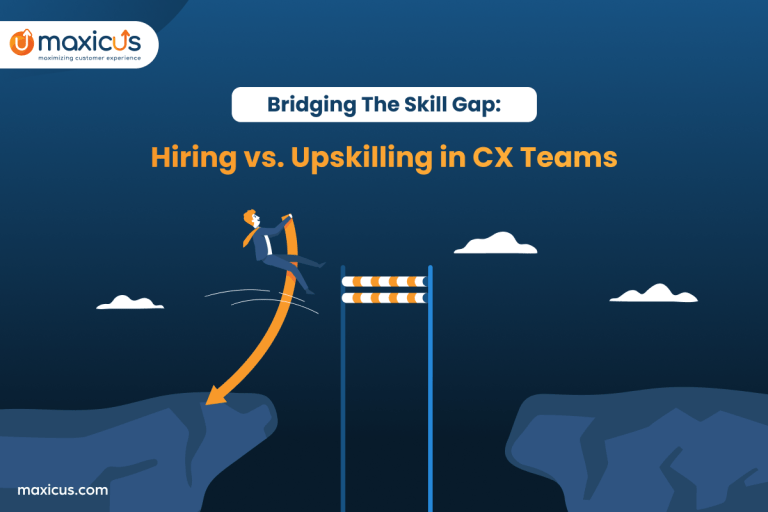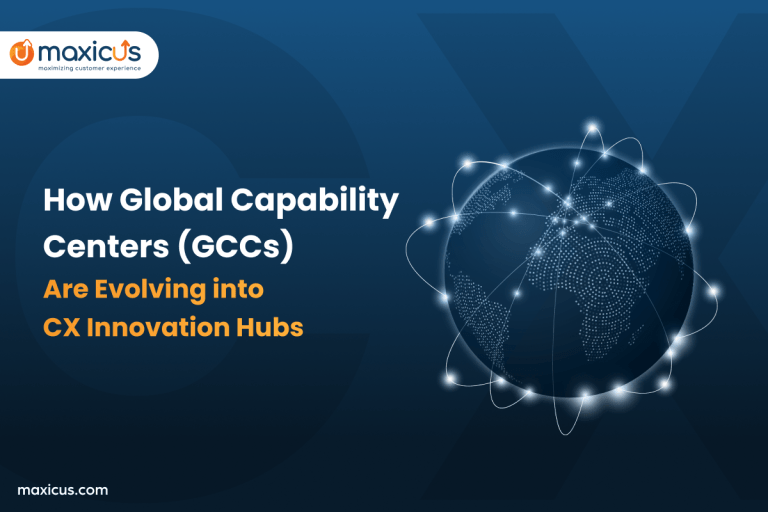Drive greater CX with employee engagement and performance management
In our guide to successful customer journey management, we mentioned the relationship between employee engagement, performance to drive greater CX for a business. Here’s more on how the three are connected and how a business can leverage them.
What is employee engagement?
Employee engagement is the measure of attachment that an employee has for their organization, which is usually influenced by the organization’s efforts for employee betterment. It is the extent to which employees feel passionate about their jobs, are committed to the organization, and put discretionary effort into their work.
Employee engagement is not the same as employee satisfaction. Employee satisfaction only indicates how happy or content your employees are. It does not address their level of motivation, involvement, or emotional commitment. For some employees, being satisfied means collecting a paycheck while doing as little work as possible.
Where employee engagement embraces change, search out ways to improve and challenge the status quo. It expects all employees to be held accountable for delivering results, whereas low performers avoid accountability, cling to the status quo, and resist change. Employee engagement and performance management are both pivotal for your customer experience and business growth.
What is employee performance management?
Performance management is a process that sets company-wide goals and helps employees streamline their efforts to make contributions to those goals. It is about tying each employee’s performance to the bottom line.
Studies reveal that 43% of best-in-class companies believe that performance management of this nature is critical to executing future business strategy.
Performance management ensures that the whole workforce is focused on the overall organizational goals, making it more likely that the company will reach that goal in a timely and efficient manner. These help individual employees set their own goals that align with the overarching mission of the company.
Performance management means nothing without engagement.
Why are employee engagement and performance management important?
Employee engagement goes beyond activities, games, and events. Continuous learning, refresher training coaching initiatives within an organization allow for greater employee engagement and growth. Employee engagement and performance management drives the customer experience. Engaged employees look at the whole of the company and understand their purpose, where, and how they fit in. and This leads to better decision-making. Businesses with an engaged workforce outperform their competition. Engagement is a key differentiator when it comes to growth and innovation.
Moreover, the expectations of employees have changed. The retention of top talent is more difficult than before. A company that has an effective employee engagement strategy and a highly engaged workforce is more likely to retain top performers as well as attract new talent. Successful organizations are value-driven with employee-centric cultures.
When an employee is unhappy at work, they aren’t motivated to go above and beyond their job description for a customer. And when they are happy at work, they are motivated to go the extra mile and do all that they possibly can to improve what a customer experiences when they interact with the company. They want to see both themselves and the organization succeed.
Performance management helps to boost employee engagement and productivity. Engaged employees stay longer, actively involve themselves in the workplace, and produce better results. Improving levels of employee engagement is the key to boosting productivity and maximizing ROI. Performance Management frameworks help, employees and managers to set goals and track progress with shared tracking tools. Goal tracking throughout the year leads to improved productivity. Managers and employees can work more collaboratively ensuring expectations are set and met.
How employee engagement can affect customer experience?
Satisfied customers cost less to serve, easily become repeat customers, and are generally more profitable for the organization.
Research company Temkin Group also recently found a correlation between efforts in employee engagement and success in customer experience.
In a media-heightened society, one review, one encounter, or one social media post can make a significant impact on your organization. Both positively or negatively for their brand experience. The outcome depends on the interactions your customers have with your employees.
This is why it is so critical to creating a working environment where employees are committed to improving customer satisfaction. You don’t need a customer experience program if your employees are focused on customer experience.
The way organizations treat employees has a direct and indirect ripple effect on your customers’ experience. If you want a thriving workforce, successful business, and happy customers, you need to start with your employees. In fact, given the current climate, if you don’t have a plan right now to focus on employee experience, your inaction could be sabotaging future success for your company.
Research has shown that you cannot expect a great customer experience if you don’t also have a great employee experience.
Employee engagement and Performance Management: Developing training programs for your support teams
Businesses with highly engaged employees outperform organizations with disengaged employees on all accounts, including higher profitability, productivity, customer metrics, and decreased turnover.
New social science research shows that strategic employee performance management allows leaders to impact employee development and learning, and thereby increase engagement.
Clearly, training has a huge impact on employee engagement and performance management. Training can help improve performance management in your workplace. Training gives employees a framework of how their job duties and tasks should be completed, and, most importantly, what their managers are looking for. It centralizes knowledge in the workplace.
Investing in training can be extremely rewarding to the entire business, including to its clients and customers. Here are things to look for in an effective training program.
Training is key to employee engagement and performance management
Too often, employees and sometimes, even managers alike, groan when they hear there is another training schedule, especially if it is mandatory. That’s because training often has a bad reputation. But training doesn’t have to be boring. When it comes to performance management training, employees should be involved with how to apply the training to their current positions. They should leave with actionable steps on how to maximize their workflows to benefit the whole team. If your training aligns with your team culture, it should get employees excited. Company culture does so much to attract top talent, retain great employees, and ensure people’s operations are always performing at its best.
Training should be updated with the latest information
Training isn’t always for new employees. Even those who you have been managing for years are hungry for new ways to improve their performance. After all, companies evolve and develop over time, so performance management should too. Therefore, training materials should be updated with new information to adapt to the changing office climate and processes.
Training should be measured
Many companies struggle to execute training that actually provides positive, profitable results. To achieve the results you want, training must not only receive the information and skills they need, but training must also be measured in similar ways to how an employee’s performance is measured. In other words, your training must be measured in terms of how much it improves employee performance or not.
Outsource training process for good
Many businesses rely on third-party consultants to provide training. Thus, it can be incredibly helpful to have an unbiased perspective that can look into your company’s performance management, that perspective can be totally useless if it doesn’t understand what results you want or what kind of performance you want to see in your workplace. This is why it is critical for businesses to collaborate with third-party consultants to fine-tune training to fit the needs of their employees and overall organization.
Training should improve business outcomes
Training should be directly related to a business outcome. It’s all very well to teach employees new skills or adjust to new software, but those skills and software should be directly related to their work. Plus, while it might be great to have your employee learn every new skill in the business, it’s important that they learn skills that can work for your business. It’s great to be certified in a certain aspect of work, but if your company is pivoting away from that product or industry, it’s important to think about the return on investment such training can have.
When your employees do learn skills that affect the business, make the effort to show how that training made a difference. Before training, discuss the KPIs you expect based on their new skill. After the training, discuss and schedule posts that you and your employee expect them to hit, based on their new skills.
Remote employee engagement and performance management
What about managing employees who are working remotely from different cities or from home? It’s important to establish a protocol for remote employee engagement and performance management with well-functioning, ongoing, one-on-one dialogue. Pro-tip: Use an integrated remote workforce management platform for support teams to ensure employee engagement and performance management with these features:
- Live chat with options to create channels or groups for particular functions or even coffee break banter. This way supervisors can improve on agent productivity and also can assist the new hire remotely.
- An option for supervisors to immediately barge-in in case of any malpractice on an agent’s behalf and any security leak can be tapped.
- Agent images and computer captures recorded and stored on the platform at regular intervals like a logbook, so the supervisors can monitor what people are doing while working and identify time-wasting, distractions, and inefficiencies.
- Supervisors should be able to issue notices and instant notifications and will be broadcast to every agent within their ambit, without interrupting the day’s work. Also, the work of the agents can be appreciated in front of everyone just like an office floor appreciation.
Leap is considered as one of the most advanced remote workforce management software equipped with all these features and more.
Foundations of an employee-centric culture
The foundations that lead to positive employee and customer experiences are:
- Customer feedback (from surveys, briefings, reasons why customers leave) is regularly communicated at all levels and improvement actions are taken. Customer feedback is talked about more internally than externally
- All employees understand who their key customers are and how their company adds value to the customer.
- Customer performance metrics are incorporated into the performance management process and are fully bought into and understood.
- Basic tools to do the job, such as a single and accurate view of the customer, are in place.
- Managers are effective in communicating, setting a clear direction, and managing fairly the performance of their teams.
- Employees are encouraged to develop, grow, and reach their potential.
Education and training on the importance of the customer and the key brand messages are important, however, it is simply not enough to secure complete employee engagement. A company must fully develop a culture in which employees have direct involvement and responsibility for the customer and in which they feel a sense of “pride” to be a part. With these additional values, the results are reflected in higher customer loyalty, productivity, and employee retention. Right employee engagement and performance management are determined as one of the most powerful drivers of revenue resulting in higher levels of business effectiveness.










